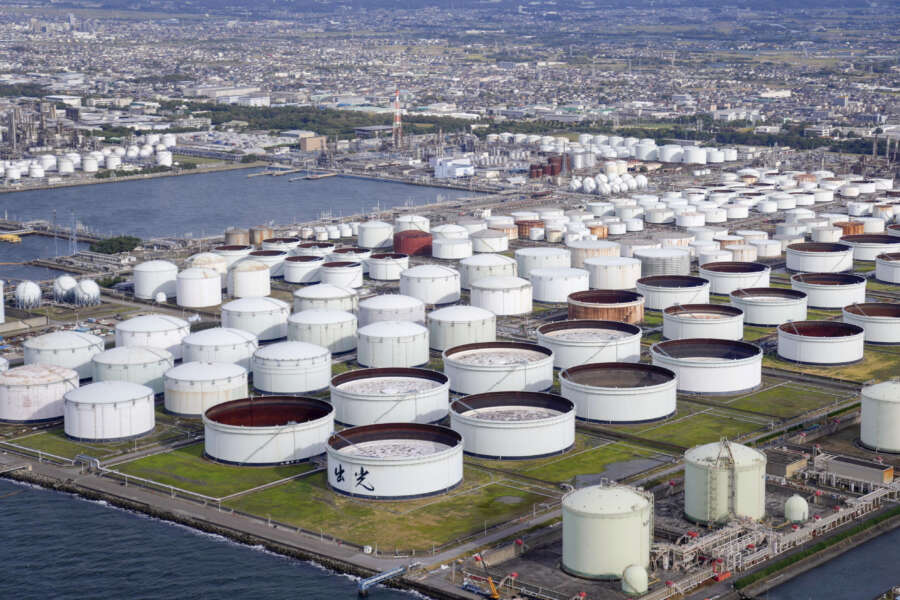
BENGALURU (Reuters) -Oil prices rallied more than a dollar a barrel on Tuesday as the greenback slid, while investors debated the potential impact to energy supply and demand from Hurricane Idalia set to hit Florida this week.
Brent crude futures rose by $1.07, or 1.3%, to settle at $85.49 a barrel, while U.S. West Texas Intermediate futures settled at $81.86 a barrel, up $1.06, or 1.3%.
The U.S. dollar index dropped on Tuesday after data showed that U.S. job openings, a measure of labor demand, fell in July. Softness in the labor market could encourage the Federal Reserve to slow down interest rate hikes, experts said.
A softer greenback makes dollar-denominated oil less expensive for investors holding other currencies, boosting demand.
Oil prices added slightly to Tuesday’s gains in low volume, post-settlement trade after industry data showed a large decline in U.S. crude oil inventories last week, indicating strong demand. Brent crude was last trading up by 1.3% and WTI rose 1.5% by 5:20 p.m. EDT.
U.S. crude stocks dropped by about 11.5 million barrels in the week ended Aug. 25, according to market sources citing American Petroleum Institute figures on Tuesday. Analysts polled by Reuters prior to the data had estimated on average a draw of 3.3 million barrels.
Official crude stockpile data from the U.S. Energy Information Administration is due at 1430 GMT on Wednesday.
Meanwhile, Hurricane Idalia was forecast to reach Category 3 strength – classified as a major hurricane, with maximum sustained winds of at least 111 mph (179 kph) – before slamming ashore Florida’s Gulf Coast in the early hours of Wednesday, according to the Miami-based National Hurricane Center (NHC).
The storm will likely impact fuel distribution systems and hit fuel consumption in the affected regions just ahead of the Labor Day federal holiday on Sept. 4, said Mizuho analyst Robert Yawger.
The weather system is not expected to hit major oil producing platforms in the U.S. Gulf of Mexico. Oil major Chevron Corp evacuated some staff from the region, but production was continuing at Chevron-operated Gulf of Mexico oil and gas facilities.
While Idalia may not pose a major supply risk, it does point to a rising risk of potential future outages in the Gulf of Mexico in what is expected to be a busy hurricane season, Yawger noted.
Adding to supply concerns, U.S. oil rig count, an early indicator of future production, declined in August for the ninth month in a row, energy services firm Baker Hughes reported on Friday.
“Even with the potential for some demand destruction (from hurricane Idalia), the coming crude oil supply squeeze is becoming more painfully obvious,” said Price Futures Group analyst Phil Flynn.
(Reporting by Shariq Khan in Bengaluru; Additional reporting by Natalie Grover in London, Emily Chow in Singapore and Arathy Somasekhar in Houston; Editing by Josie Kao, Nick Zieminski and Lincoln Feast.)


